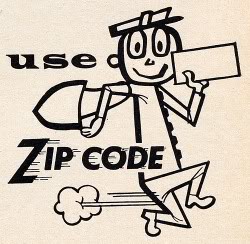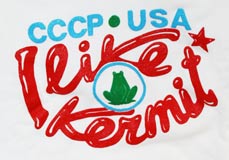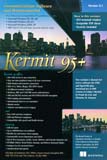
612 West 115th Street, New York NY 10025 USA • kermit@columbia.edu

|
612 West 115th Street, New York NY 10025 USA • kermit@columbia.edu |
About Kermit |
Frank da Cruz, fdc@columbia.edu
 Most recent update:
Tue May 3 07:21:25 2022
(conversion to HTML5)
Most recent update:
Tue May 3 07:21:25 2022
(conversion to HTML5)
The Kermit Project was founded at the Columbia University Computer Center (now CUIT) in 1981 to meet a specific need, and until the mid- to late 1990s, Kermit was Columbia's standard desktop connectivity software, used universally by students, faculty, and staff to connect from desktop microcomputers, PCs, Macintoshes, and Unix workstations to the central computing facilities: the IBM mainframes (1963-2017), the DECSYSTEM-20s (1977-1988), CLIO (Columbia's first online library information system, 1984-2003), and Cunix (our Unix-based servers, 1986-present), and to departmental VAXes, PDP-11s, Suns, and other minicomputers. In the early days of microcomputers and PCs but before widespread deployment of local area networks and desktop workstations that connected to them, Kermit software linked the desktop to e-mail, bulletin boards, file sharing, text processing, messaging, and other aspects of the new on-line culture that is now taken for granted, long before the experience was available at most other institutions. At Columbia, the DEC-20s and the departmental minicomputers are long gone and the IBM mainframes are now only for backoffice use, but Kermit software is still used for SSH sessions from the desktop to CUNIX, and by the technical staff for system and network administration tasks; for example, configuring racks full of HP blade servers as they arrive, management of the University's telephone system, CGI scripting, alpha paging of on-call staff, and so on. Plus, of course, by old-timers who just plain prefer the safety and efficiency of text-mode shell sessions for email and to get their work done; for example, software development and website creation and management.
Over the years, the Kermit Project grew into a worldwide cooperative nonprofit software development and distribution effort, headquartered at and coordinated from Columbia University, as Kermit software was ported to or developed for more and more computers and operating systems (see list). The Kermit Project is dedicated to production of cross-platform, long-lasting, stable, standards-conformant, interoperable communications software, and has been actively engaged in the standards process. Kermit software is used all over the world in every sector of the economy: national government, state and local government, academic, medicine and health care, engineering, aerospace, nonprofit, and commercial.
 Although terminal emulation has been largely supplanted by the Web for
online access, Kermit software continues to play a role in other
applications such as remote sensing and data collection, management and
troubleshooting of networking and telecommunications equipment, back office
work, cargo and inventory management, medical insurance claim submission,
electronic funds transfer, and online filing of income tax returns. Kermit
software is embedded in network routers and switches, in cell-phone towers,
in medical diagnostic and monitoring equipment, even in cardiac pacemakers, not
to mention the cash registers of quite a few big-name "big box"
retailers. In 2002 Kermit flew on the International
Space Station, and Kermit software is the communication method used by
EM APEX ocean floats (left) supplying realtime
data to hurricane researchers and trackers to this day (the hurricane
project entered a new expanded phase in 2010 based on a new version of Embedded Kermit).
Although terminal emulation has been largely supplanted by the Web for
online access, Kermit software continues to play a role in other
applications such as remote sensing and data collection, management and
troubleshooting of networking and telecommunications equipment, back office
work, cargo and inventory management, medical insurance claim submission,
electronic funds transfer, and online filing of income tax returns. Kermit
software is embedded in network routers and switches, in cell-phone towers,
in medical diagnostic and monitoring equipment, even in cardiac pacemakers, not
to mention the cash registers of quite a few big-name "big box"
retailers. In 2002 Kermit flew on the International
Space Station, and Kermit software is the communication method used by
EM APEX ocean floats (left) supplying realtime
data to hurricane researchers and trackers to this day (the hurricane
project entered a new expanded phase in 2010 based on a new version of Embedded Kermit).
 Since the 1980s, Kermit protocol and software have been used on the
factory floor in programmable die-cutting, press brake, laminating,
flat roll, shearing, metal- and plastic-processing, woodworking, and other
machines. For example, in the manufacture of the Boeing 787, where
Kermit is used to control a Tape
Layer that forms certain body components. You can read more about how
Kermit is used on the factory floor here and here.
Since the 1980s, Kermit protocol and software have been used on the
factory floor in programmable die-cutting, press brake, laminating,
flat roll, shearing, metal- and plastic-processing, woodworking, and other
machines. For example, in the manufacture of the Boeing 787, where
Kermit is used to control a Tape
Layer that forms certain body components. You can read more about how
Kermit is used on the factory floor here and here.


 In the 1990s Kermit software was used in US Post Office automation, it played a
key role in the 1994 Brazilian national
election (the biggest in the history of the world up to that
time), and it was central to the UN relief
mission to Bosnia, “linking the entire spectrum of the project
operation, from mainframe, minicomputer, PCs, to handheld devices and
barcode readers.”
In the 1990s Kermit software was used in US Post Office automation, it played a
key role in the 1994 Brazilian national
election (the biggest in the history of the world up to that
time), and it was central to the UN relief
mission to Bosnia, “linking the entire spectrum of the project
operation, from mainframe, minicomputer, PCs, to handheld devices and
barcode readers.”
In the 1980s the robustness of the Kermit protocol suited it ideally
for service in the
 Green Revolution
in Africa, the joint European-USSR Giotto space
mission, and perhaps most notably in reestablishing data communication
between US research stations in Antarctica and the mainland after they were
cut off in 1986 in a computer mishap during the 9-month Antarctic winter.
In 1989 an international conference on Kermit
was hosted in Moscow, USSR, and Kermit sessions were featured at other
conferences throughout the 1980s in Tokyo, Bern, Paris, Nashville, and
elsewhere.
Green Revolution
in Africa, the joint European-USSR Giotto space
mission, and perhaps most notably in reestablishing data communication
between US research stations in Antarctica and the mainland after they were
cut off in 1986 in a computer mishap during the 9-month Antarctic winter.
In 1989 an international conference on Kermit
was hosted in Moscow, USSR, and Kermit sessions were featured at other
conferences throughout the 1980s in Tokyo, Bern, Paris, Nashville, and
elsewhere.
 The Kermit protocol and software are named after Kermit the Frog,
star of the television series, The Muppet Show; the name Kermit is used by
permission of Henson Associates, Inc. Why is it named after Kermit the
Frog? In May of 1981 we already had first implementations of the
protocol working, but we didn't have a name for the protocol or the software
yet. A group of us was discussing it (me, Bill Catchings, Bill Schilit,
Jeff Damens, I think that was the group), without actually caring too much
since we never expected the software to spread all over the world and last
for decades. I happened to be facing the wall that had a Muppets calendar
on it, and since my children were such big fans of the Muppet Show I
said,
The Kermit protocol and software are named after Kermit the Frog,
star of the television series, The Muppet Show; the name Kermit is used by
permission of Henson Associates, Inc. Why is it named after Kermit the
Frog? In May of 1981 we already had first implementations of the
protocol working, but we didn't have a name for the protocol or the software
yet. A group of us was discussing it (me, Bill Catchings, Bill Schilit,
Jeff Damens, I think that was the group), without actually caring too much
since we never expected the software to spread all over the world and last
for decades. I happened to be facing the wall that had a Muppets calendar
on it, and since my children were such big fans of the Muppet Show I
said, How about Kermit
? Thirty years later (May 2011) I found
the calendar page that I was looking at when I said that, you can see it on
the left and you can click on it to see a bigger image.
Our premiere Kermit software implementations are:
C-Kermit and IBM Mainframe Kermit are host-based packages with an unequaled range of versatility. Kermit 95 and MS-DOS Kermit are full-featured desktop communication software programs rivaling the quality of anything else on (or off) the market, except perhaps in flashiness of user interface: Kermit programs follow the text-mode prompt-and-command style of yesteryear, which is baffling to some people until they realize the advantages:
mkdir thumbnails rename *-t.jpg thumbnails/
And then in the thumbnails subdirectory, Ctrl-A to "select all" and drag to Photoshop (and then, if desired, drag the thumbnails back to the original directory with one mouse motion, or rename them back with one Kermit command).
 Kermit 95 was developed not only to meet Columbia's need for
connectivity from Windows 95 (and later) to the central text-based
services, but also to raise money to support the Kermit Project. Unlike
other Kermit programs, K95 was strictly commercial, available in both a
retail shrinkwrapped version (right) and in bulk
right-to-copy licenses. From its release in 1995 until mid-2011, over a
quarter million bulk license seats were purchased in over 1000 licenses
licenses ranging in size from 100 seats to 10,000. About 30,000
shrinkwrapped copies were sold, many thousands more purchased for download
from e-academy, and K95 was
site-licensed by over 100 universities as well as by entire statewide
university systems such as SUNY (64 campuses with about 400,000 students).
Kermit 95 was developed not only to meet Columbia's need for
connectivity from Windows 95 (and later) to the central text-based
services, but also to raise money to support the Kermit Project. Unlike
other Kermit programs, K95 was strictly commercial, available in both a
retail shrinkwrapped version (right) and in bulk
right-to-copy licenses. From its release in 1995 until mid-2011, over a
quarter million bulk license seats were purchased in over 1000 licenses
licenses ranging in size from 100 seats to 10,000. About 30,000
shrinkwrapped copies were sold, many thousands more purchased for download
from e-academy, and K95 was
site-licensed by over 100 universities as well as by entire statewide
university systems such as SUNY (64 campuses with about 400,000 students).
The Kermit Project was put on a self-funding basis in 1984, and from then until its cancellation in 2011, it realized $8,894,912.00 in revenue for the University, plus an equipment grant (the Hermit Project) valued at $3,000,000.00. Between 1984, when the Kermit "business" began, until 1998, when the Internet took over the world, we made 31,591 shipments of Kermit software on magnetic media (mainly 10-inch reels of 9-track magnetic tape); 4679 of them international to 107 different countries including some that no longer exist such as the USSR and Yugoslavia, and to others you might not expect such as New Caledonia.
Kermit protocol uses well-defined, sequenced, error-checked packets in each direction to effect a file-transfer session, following standard rules of protocol layering. Packets are designed for maximum transparency, so they can pass though any communication medium, no matter how restrictive. Half-duplex (stop and wait), full-duplex (sliding windows with selective retransmission), and continuous streaming transport can be used to adapt to any connection.
The feature that distinguishes Kermit protocol from most others is its wide range of settings to allow adaptation to any kind and quality of connection between any two kinds of computer — packet length, packet encoding, window size, character set, error-detection method, timeouts, pauses. Most other protocols are designed to work only on certain kinds or qualities of connections, and/or between certain kinds of computers or like file systems, and therefore work poorly (or not at all) elsewhere and offer few if any methods to adapt to unplanned-for situations. Kermit, on the other hand, allows you to achieve successful file transfer and the highest possible performance on any given connection.
Unlike FTP or X-, Y-, and ZMODEM (the other protocols with which Kermit is most often compared) Kermit protocol does not assume or require:
(although Kermit does not require any of these conditions, it can take advantage of them when they are available). A feature article on Kermit protocol by Tim Kientzle in the February 1996 issue of Dr. Dobb's Journal noted that “Kermit's windowing approach is faster than protocols such as XModem and YModem . . . What many people don't realize is that under less-than-ideal conditions, Kermit's windowing approach is significantly faster than ZModem, a protocol with a well-deserved reputation for fast transfers over good-quality lines.” The efficiency of the Kermit protocol is analyzed in depth here and here.
Thus Kermit transfers work "out of the box" almost every time. And at a higher level, the Kermit command language allows all sorts of handy file selection criteria to be used in any combination, for example:
 The Kermit file transfer protocol specification is given in the book,
Kermit, A File Transfer Protocol
by Frank da Cruz, with a foreword by
Donald Knuth
(now available online in PDF format).
The specification is also available online in the Sixth edition of the Kermit Protocol Manual (1986). Both of these lack
some of the later refinements, but they do include server mode, long
packets, sliding windows, etc. Documentation for the later protocol
additions is collected and publicly available HERE.
A formal specification and verification of the Kermit protocol was
published by James Huggins of the University of Michigan in 1995; you can
download it HERE.
The Kermit file transfer protocol specification is given in the book,
Kermit, A File Transfer Protocol
by Frank da Cruz, with a foreword by
Donald Knuth
(now available online in PDF format).
The specification is also available online in the Sixth edition of the Kermit Protocol Manual (1986). Both of these lack
some of the later refinements, but they do include server mode, long
packets, sliding windows, etc. Documentation for the later protocol
additions is collected and publicly available HERE.
A formal specification and verification of the Kermit protocol was
published by James Huggins of the University of Michigan in 1995; you can
download it HERE.
To download a file, say, message.txt, you type the following command at the shell prompt:
kermit -s message.txtThe file is sent to Kermit 95's current directory on your PC (or to its DOWNLOAD DIRECTORY if you have defined one). It doesn't matter if the file is text or binary; Kermit figures it out and transfers it automatically in the appropriate mode.
Similarly if you want to transfer a group of files, say, all the files whose names start with “daily.”:
kermit -s daily.*Kermit sends each file that matches, switching automatically between text and binary mode as appropriate for each file (daily.jpg, daily.xls, daily.txt, ...)
Uploading a file from your PC to Unix is just as easy. Suppose you have a file called “budget.xls” in Kermit 95's current directory on your PC. To upload it to UNIX, type this at the Unix shell prompt:
kermit -g budget.xlsThose are the basics; there are many variations and refinements; for example:
To save yourself some typing, you can define aliases on Unix (in your shell profile):
alias s="kermit -Ys" alias g="kermit -Yg"(s for Send, g for Get). And then:
s message.txt g budget.xlsIt's worth noting that you are transferring your files over the same connection you already have; thus there is no need make a new connection, re-authenticate yourself, or similar bureaucracy. If the connection is secured by SSH, Kerberos, SSL, TLS, or SRP, then the file transfer is also secure, automatically.
This marks an unparalleled degree of convenience. When you tell C-Kermit on Unix to send or get a file, its first file-transfer packet is recognized automatically by Kermit 95's terminal emulator and K95 pops into either receive mode or server mode, depending on the direction, and when the transfer is finished, K95 returns to its terminal emulation screen. If there is an error (for example, if you do not have write permission in the destination directory) K95 remains in its file-transfer screen so you can see what the problem was.
The same procedures also work Unix-to-Unix, K95-to-VMS, Unix-to-VMS, VMS to Unix, or OS/2 to VMS or Unix, as long as you are using K95 or C-Kermit as your terminal program.
Over the years, the Kermit Project and software were the subject of various controversies, notably:
Our solution was to keep the software free for every individual and organization for his/her/its own use, but to require companies to license it if they were going to bundle it with a product or otherwise furnish it to customers or clients; that is, if they were looking to make money from our labor. This way they could make money but they would have to share it with those who did the work.
As the Free Software movement took root, its proponents objected strenously to this approach, but it allowed the Kermit project to continue another 10 years. Then in 1994, with the upcoming release of Microsoft Windows 95, we decided to release the one and only Kermit program that was 100% commercial: Kermit 95. This product allowed the Kermit Project to flourish until about 2003, when the US and world economy began to crash, and to continue to exist in increasingly diminished form until 2011 when the Kermit Project at Columbia University was finally canceled. At that point, since nobody's job depended on it any more, all Kermit software that we had complete rights to was placed under an Open Source license, and now everybody is happy except those who lost their jobs and those who called our free tech-support number whenever they needed help. And those who wonder why there was never another Kermit 95 release.
The Kermit protocol, on the other hand, was designed for micro-mainframe connections, which were much less tolerant and much more demanding because the connections were rarely transparent, and the underlying computers were radically different; for example, they might use different file formats and character sets for file storage. Kermit, then, was aimed more towards institutions — universities, hospitals, corporations, government agencies — that had machine rooms with big central shared computers or a diversity of departmental minicomputers plus individual users with PCs or workstations on their desks, rather than hobbyists all with relatively homogeneous personal microcomputers.
XMODEM was a painfully slow protocol, so the impetus was to evolve it into faster and faster protocols; hence YMODEM and ZMODEM. But the newer MODEM protocols still assumed a (more or less) 100% transparent connection between two identical or very similar computers.
As YMODEM and ZMODEM appeared, people began to criticize Kermit protocol for being slow, as indeed it was in its original form: short packets because most mainframes could not withstand long bursts of incoming data from a terminal; half-duplex stop-and-wait because IBM mainframes did not support full-duplex communication; printable encodings for control characters and 8-bit characters because these could not pass through the mainframe's terminal driver. Thus the original Kermit protocol was a “least common denominator” among all the platforms where it needed to run (and many more, besides, as it turned out). Its major strength was that it was adaptable to any platform or communication method, including those where XMODEM family did not fit at all; for example, in the IBM mainframe world.
Meanwhile, some BBS software packages offered Kermit protocol on their Upload and Download menus, but those Kermit implementations were invariably minimal (i.e. slow), often buggy, and occasionally totally nonfunctional (see the Misconceptions page about third-party Kermit protocol implementations). This tended to reinforce the impression within the hobbyist culture that Kermit protocol was slow.
To address the performance complaints, we took advantage of the intrinsic extensibility of the Kermit protocol design (in which transfers begin with a feature-negotiation phase) to add options for longer packets and for full-duplex sliding windows with selective retransmission, as well as options for compression and for taking advantage of transparent and/or error-free connections (for example, network connections) when they were available. These changes made Kermit protocol as fast or faster than ZMODEM without sacrificing its universality, data conversion features, robustness, and (most important) backwards compatibility (which is why you don't see separate protocols: XKERMIT, YKERMIT, ZKERMIT). The performance changes date back to about 1993; see benchmarks.
Neverthess, each camp had its adherents based largely on its own culture and each tended to dismiss the other, a trend that continues until today. Most critics of Kermit base their observations on Kermit software from early 1980s, or upon 3rd-party Kermit protocol implementations, which tend to work poorly. For a more detailed discussion, see the Misconceptions page.
In 2013 I noticed the Slashdot discussion of the cancelation of the Kermit Project at Columbia University. It illustrates the present topic quite well, as the discussion is dominated by hobbyists and BBS users. But a few knowledgeable Kermit users also contributed; here are some examples:
In the same discussion there is some complaining that no adequate explanation was given for why some modules of Kermit 95 could not be released in Open Source. The explanation was, and is, HERE.
| The Kermit Project / Columbia University / kermit@columbia.edu / 30 September 2011 / Updated: Tue May 3 07:18:31 2022 |